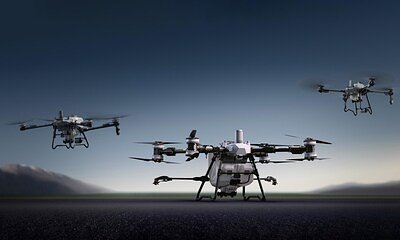
DJI Drones Take Flight in Europe: Regulatory Shifts & Tech Advancements Reshape Agriculture
New drone models from DJI are poised to revolutionize European farming, but regulatory changes and competitive pressures are shaping the landscape. A deep dive into the tech, laws, and market dynamics.
DJI Drones Take Flight in Europe: Regulatory Shifts & Tech Advancements Reshape Agriculture
Hannover, Germany – November 10, 2025 – DJI’s unveiling of its latest agricultural drone models at Agritechnica 2025 signals a potential turning point for European farming. The new Agras T100, T70P, and T25 drones boast enhanced safety features, increased payload capacities, and intelligent flight capabilities. However, this technological leap is occurring alongside a significant shift in European regulations, and intensified competition in the agricultural drone market.
New Models: Power and Precision in the Field
The Agras T100, the flagship model, features LiDAR, millimeter-wave radar, and a Penta-Vision system for improved obstacle avoidance and terrain adaptation. The T70P and T25 build upon this foundation with refined safety systems and tailored capabilities. The T70P offers a balance of power and efficiency for medium-to-large farms, while the T25 is designed for solo operators and smaller plots like vineyards and orchards.
“These drones aren't just about spraying chemicals; they're about precision agriculture,” explained a source familiar with DJI’s development process. “They allow farmers to target applications with incredible accuracy, reducing waste and environmental impact.”
The increased payload capacity and flight times of the new models are particularly appealing to large-scale agricultural operations. Farmers can cover more ground in less time, optimizing resource allocation and boosting productivity. The intelligent flight algorithms also contribute to improved efficiency and reduced operator fatigue.
Regulatory Landscape: A Shifting Tide
For years, stringent regulations hindered the widespread adoption of drones in European agriculture. However, recent legislative changes are creating a more favorable environment. France and Italy have emerged as frontrunners, paving the way for expanded drone operations. France, in April 2025, authorized drone crop treatment under specific conditions, particularly for steep slopes, banana plantations and with biocontrol agents. Italy, following suit in October 2025, approved a three-year trial of aerial spraying, expanding beyond fertilizers.
“The regulatory shift is crucial,” stated an agricultural policy analyst. “Farmers need a clear legal framework to invest in this technology and operate it safely and efficiently.”
While other EU member states continue to align with EASA regulations, the momentum towards greater flexibility is undeniable. The trend reflects a growing recognition of the potential benefits of drone technology for sustainable farming practices.
Competition Heats Up
DJI’s dominance in the agricultural drone market is not unchallenged. Competitors like XAG are aggressively pursuing innovation and market share. XAG's P150 and P100 Pro models offer comparable capabilities and focus on autonomous swarm technology.
“The competition is fierce,” noted an industry observer. “Manufacturers are constantly pushing the boundaries of what’s possible.”
Other players, including Yamaha Motor Co., Ltd. and several emerging startups, are also vying for a piece of the pie. This competitive landscape is driving down prices and accelerating the pace of innovation.
“We’re seeing a new generation of agricultural drones that are more sophisticated, more reliable, and more affordable,” said a source within a competitor company.
Beyond Spraying: The Expanding Applications
The potential applications of agricultural drones extend far beyond spraying pesticides and fertilizers. Drones can be equipped with multispectral cameras to monitor crop health, identify areas of stress, and optimize irrigation. They can also be used for planting seeds, mapping fields, and assessing damage after natural disasters.
“Drones are becoming an integral part of the digital farm,” stated an agricultural technologist. “They provide farmers with real-time data and insights that were previously unavailable.”
The integration of drone technology with IoT sensors, cloud computing, and big data analytics is creating a powerful ecosystem for precision agriculture.
Challenges and Future Outlook
Despite the promising outlook, several challenges remain. The cost of drones and associated software can be prohibitive for some farmers. Concerns about data privacy and cybersecurity also need to be addressed. Additionally, ensuring adequate training and certification for drone operators is crucial for safe and responsible operation.
“Education and training are key,” emphasized a safety expert. “Farmers need to understand how to operate drones safely and effectively.”
Looking ahead, the agricultural drone market is poised for continued growth. Technological advancements, regulatory changes, and increasing demand for sustainable farming practices will drive innovation and adoption.
“We’re on the cusp of a revolution in agriculture,” stated a leading agricultural economist. “Drones are just one piece of the puzzle, but they’re a critical piece.”
The convergence of drone technology, data analytics, and precision agriculture is transforming the way food is produced, promising a more efficient, sustainable, and resilient food system for the future. The coming years will undoubtedly see an increased presence of drones in European fields, reshaping the landscape of modern agriculture.
📝 This article is still being updated
Are you a relevant expert who could contribute your opinion or insights to this article? We'd love to hear from you. We will give you full credit for your contribution.
Contribute Your Expertise →